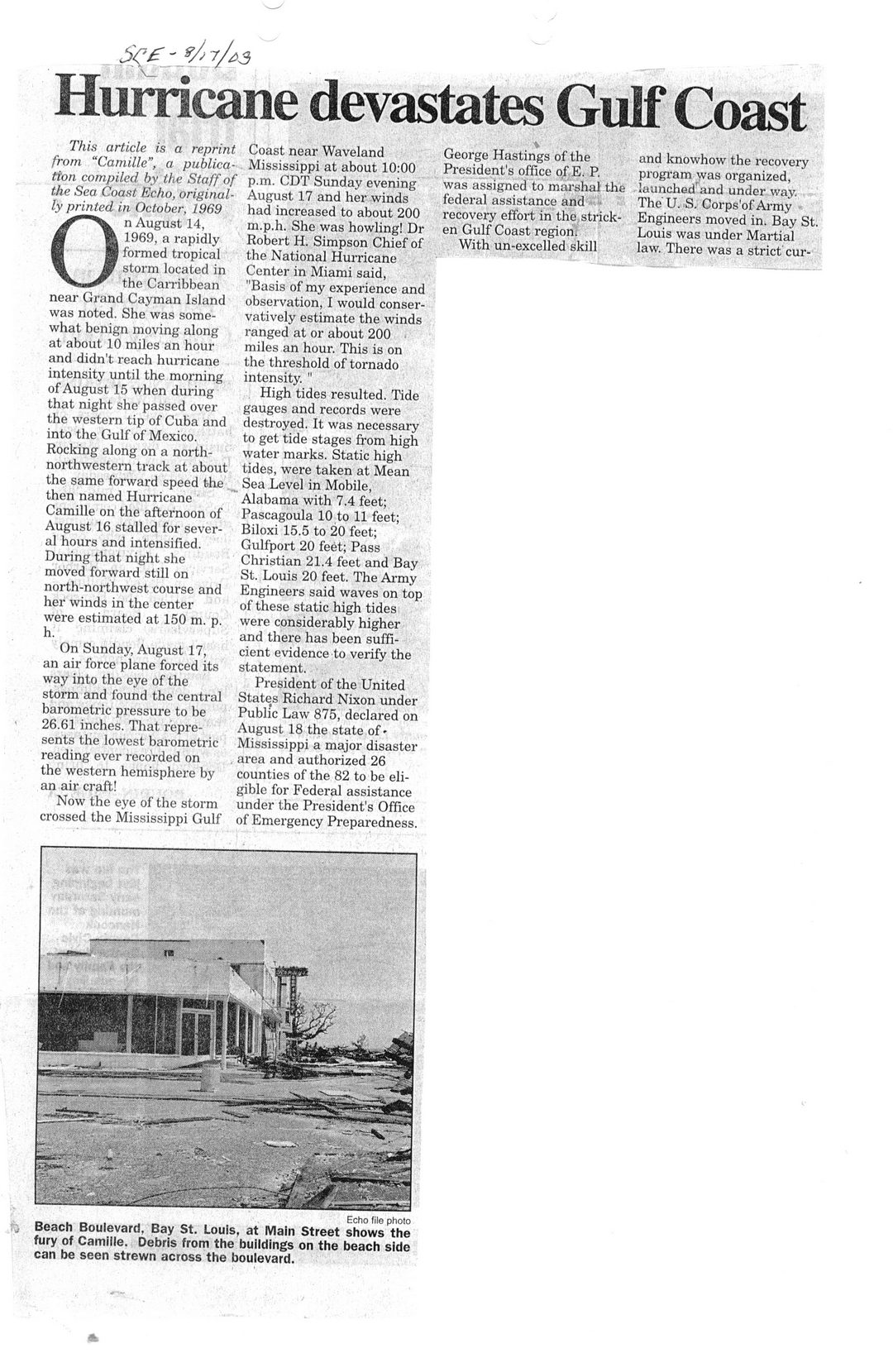This text was obtained via automated optical character recognition.
It has not been edited and may therefore contain several errors.
Hurricane devastates Gulf Coast This article is a reprint from “Camille”, a publication compiled by the Staff of the Sea Coast Echo, originally printed in October, 1969 On August 14, 1969, a rapidly formed tropical storm located in the Carribbean near Grand Cayman Island was noted. She was somewhat benign moving along at about 10 miles an hour and didn't reach hurricane intensity until the morning of August 15 when during that night she passed over the western tip of Cuba and into the Gulf of Mexico. Rocking along on a north-northwestern track at about the same forward speed the ^ then named Hurricane Camille on the afternoon of August 16 stalled for several hours and intensified. During that night she moved forward still on north-northwest course and her winds in the center were estimated at 150 m. p. h. On Sunday, August 17, an air force plane forced its way into the eye of the storm and found the central barometric pressure to be 26.61 inches. That represents the lowest barometric reading ever recorded on the western hemisphere by an air craft! Now the eye of the storm crossed the Mississippi Gulf Coast near Waveland Mississippi at about 10:00 p.m. CDT Sunday evening August 17 and her winds had increased to about 200 m.p.h. She was howling! Dr Robert H. Simpson Chief of the National Hurricane Center in Miami said, "Basis of my experience and observation, I would conservatively estimate the winds ranged at or about 200 miles an hour. This is on the threshold of tornado intensity. " High tides resulted. Tide gauges and records were destroyed. It was necessary to get tide stages from high water marks. Static high tides, were taken at Mean _ Sea Level in Mobile, Alabama with 7.4 feet; Pascagoula 10 to 11 feet; Biloxi 15.5 to 20 feet; Gulfport 20 feet; Pass Christian 21.4 feet and Bay St. Louis 20 feet. The Army Engineers said waves on top of these static high tides were considerably higher and there has been sufficient evidence to verify the statement. President of the United State^ Richard Nixon under Public Law 875, declared on August 18 the state of • Mississippi a major disaster . area and authorized 26 counties of the 82 to be eligible for Federal assistance under the President's Office of Emergency Preparedness. George Hastings of the President's office of E. P. was assigned to marshal the federal assistance and recovery effort in the stricken Gulf Coast region. With un-excelled skill Echo file photo Beach Boulevard, Bay St. Louis, at Main Street shows the fury of Camille. Debris from the buildings on the beach side can be seen strewn across the boulevard. and knowhow the recovery program was organized, launched and under way. The U. iS. Corps'of Army Engineers moved in. Bay St. Louis was under Martial law. There was a strict' cur-

Hurricane Camille Camille-Article-Reprint (03)
